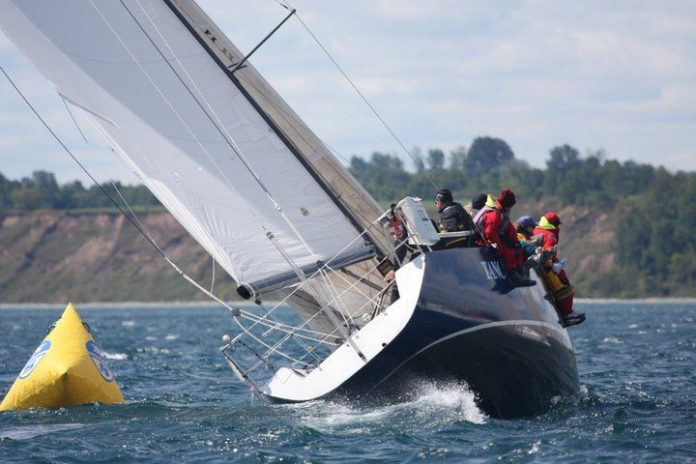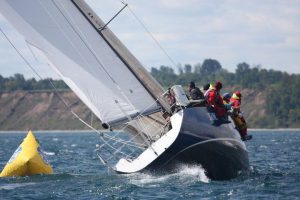

Why Heel Angle Is Important. Don’t worry about the instruments (unless of course it is showing heel) just keep the heel angle steady.
One of the biggest mistakes crews make is letting the wind push the boat around. It is easy to look around the fleet on a puffy or windy day and work out who is fastest. The boats that have the most consistent angle of heel through the puffs and lulls will be the quickest.
Key Things for Keelboat Helmspersons and Trimmers to Aim for.
One of the key things for a helmsperson to watch is keeping the angle of the forestay consistent with the horizon. In a keelboat, it is important to find the fastest angle of heel and then to keep it there.
Yacht designers use computer programs which predict the target speed for an angle of sail, wind speed and the target heel angle. For the sailors it is simply a matter of creating a chart matrix for their boat and using it. This should be displayed prominently so all team members can have input in keeping the correct heel angle.
It is important to have a crewmember allocated the job to call the puffs and lulls. This ensures that the helmsperson can anticipate changes in wind strength and steer accordingly.
To control the angle of heel on a puffy days you can play the sails but steering can also play a part. If hit with a puff the helmsperson can feather up into the wind a little while the sails are being adjusted. A keelboat will carry way while adjustments to sails are made which is a luxury not afforded to a dinghy.
Heel and Dinghies
The goal is different on most centreboard and sports boats. They sail fastest with little or no heel. On a puffy day in a dinghy you have to use a lot of kinetics when sailing upwind.
There is an expression often used in dinghy sailing which is “Ease, Hike Trim”. The end result is that the boat doesn’t heel when a puff hits but moves forward.
A dinghy sailor must be super sensitive to angle of heel and has the ability to adjust the sails quickly to maintain the desired angle.

